On this page, you will make the Compliance Rate chart - shown as the percentage below:
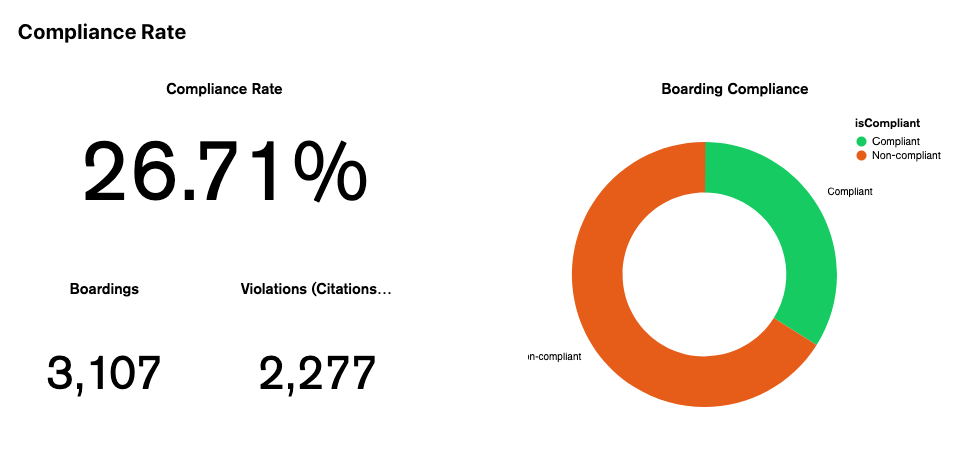
-
On the Charts Dashboard, select “Add Chart”

- Set the title to “Compliance Rate”

- Set the Data Source to wildaid.BoardingReports
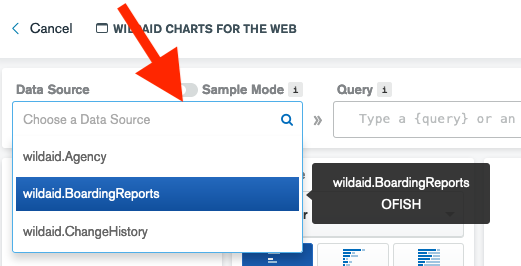
-
Choose a Chart type of Text:
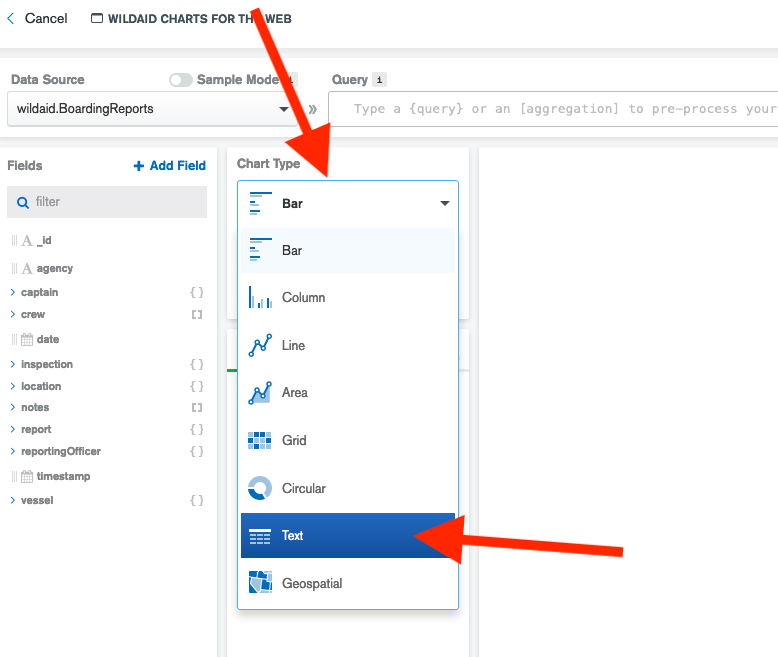
-
Choose a Chart subtype of Number:
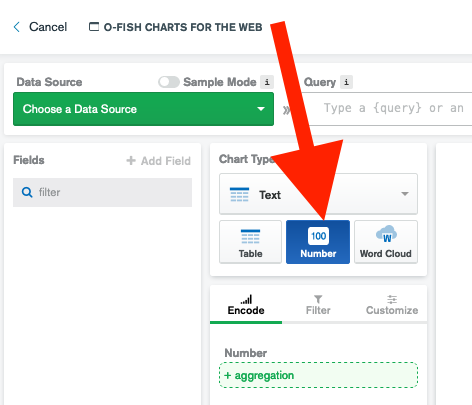
- We need to calculate the percentage of a subset of data as compared to the total amount of data, which we cannot do with a calculated field. However, we can do this with an aggregation, which we can paste into the Query field, and then select “Apply”:
[{$group: { _id: null, total: { $sum: 1 }, justCompliant: { $sum: { $cond: { 'if': {$and: [ {$ifNull: ['$inspection.summary.violations.disposition',0]}, {$or: [ {$in: ['Warning','$inspection.summary.violations.disposition']}, {$in: ['Citation','$inspection.summary.violations.disposition']} ] } ] }, 'then': 0, 'else': 1 } } } }}, {$project: { percentage: { $divide: [ '$justCompliant', '$total' ] }, inspection: 1, justCompliant: 1, total: 1 }}]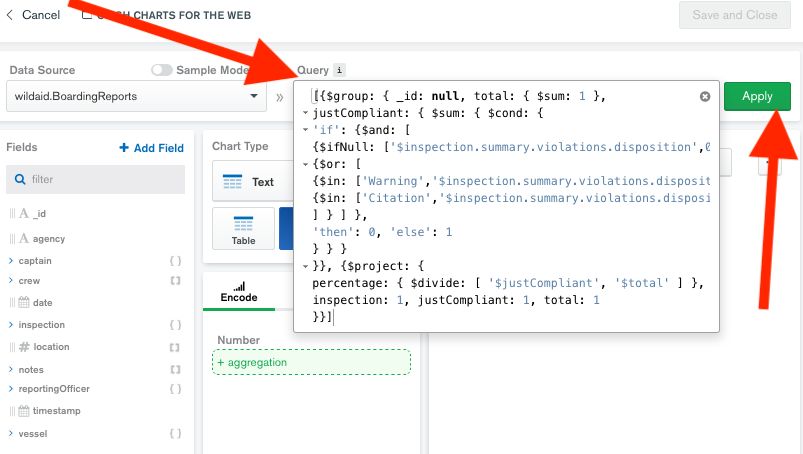
-
You will see your fields have changed to an ID and three numbers - justCompliant, percentage, and total:
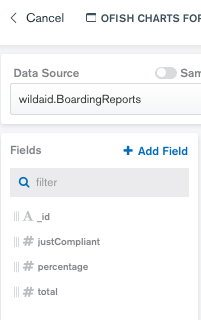
-
Drag “percentage” to the “Number” field, making sure that the aggregate is by “SUM”:
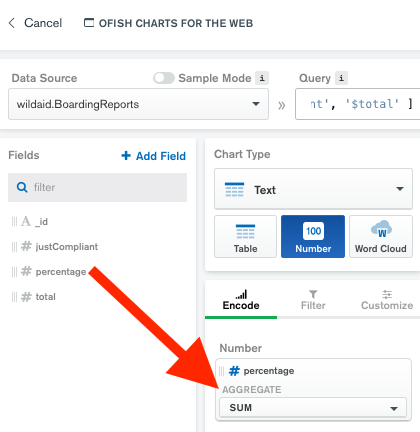
-
The field is in decimal value:
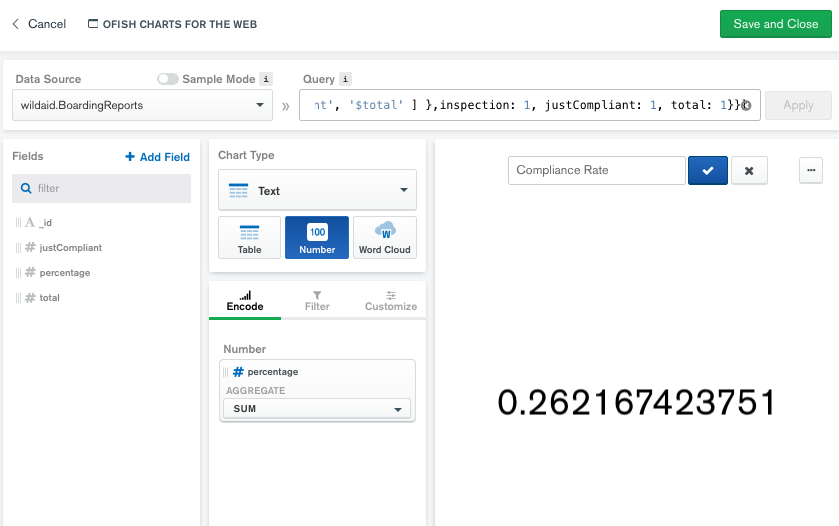
-
Select “Customize”, then percentage, then toggle Decimals and set it to 2:
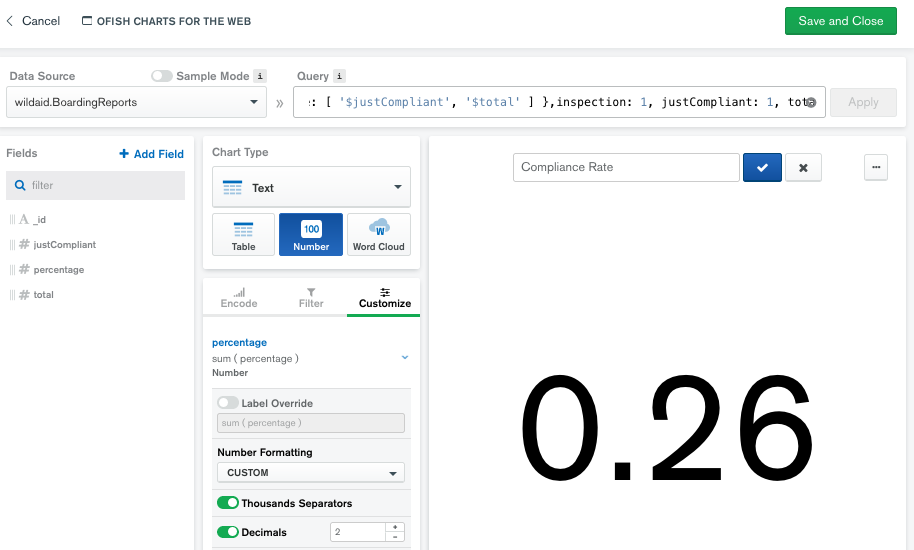
-
Toggle the Multiplier and set it to 100.
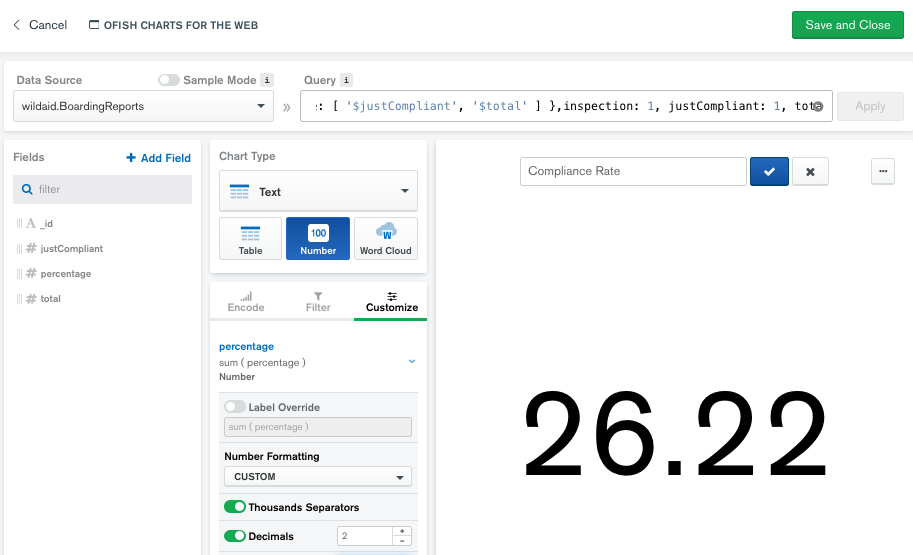
-
Toggle the Suffix and set it to be %:
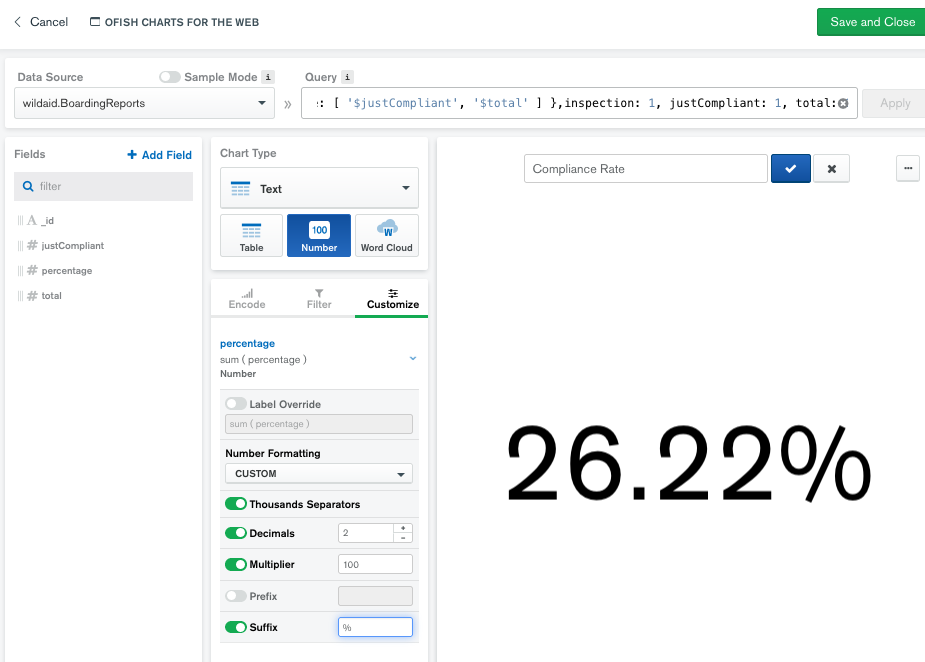
And you should see the percentage in the window. Select “Save and Close”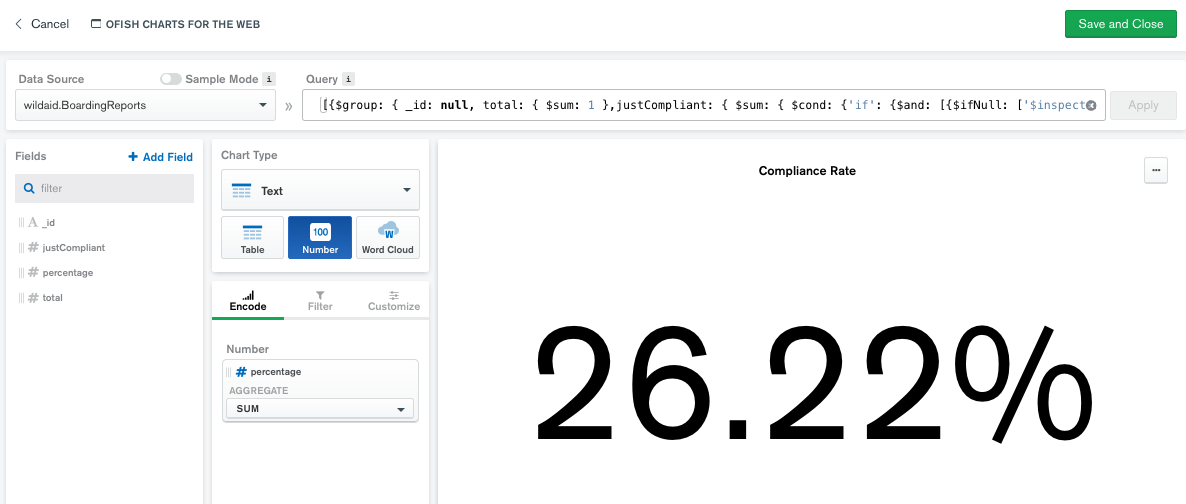
-
On your dashboard, mouse over the chart until you see the ellipses. Select the ellipses and select “Embed Chart”:
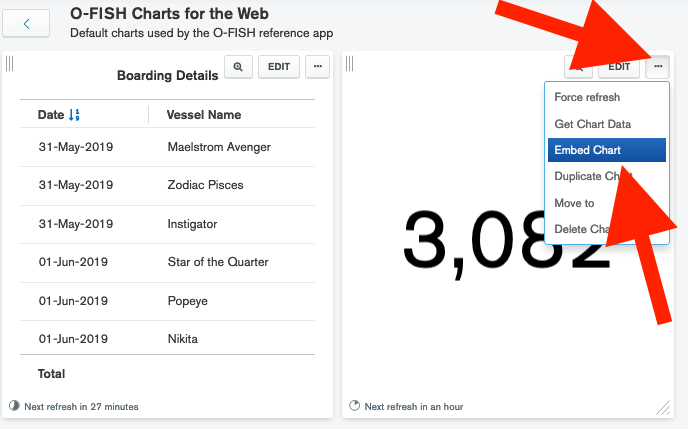
-
Select the “Authenticated” section, make sure “Enabled authenticated access” is set to “ON”, and set the User Specified Filters to “date” and select the green “SAVE” button:
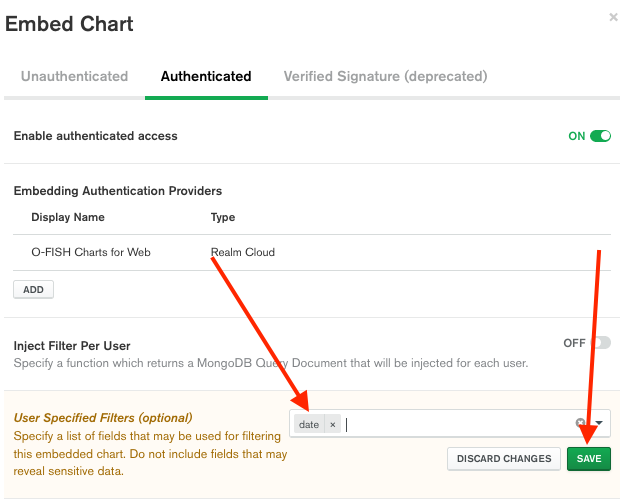
-
Copy the Chart ID:
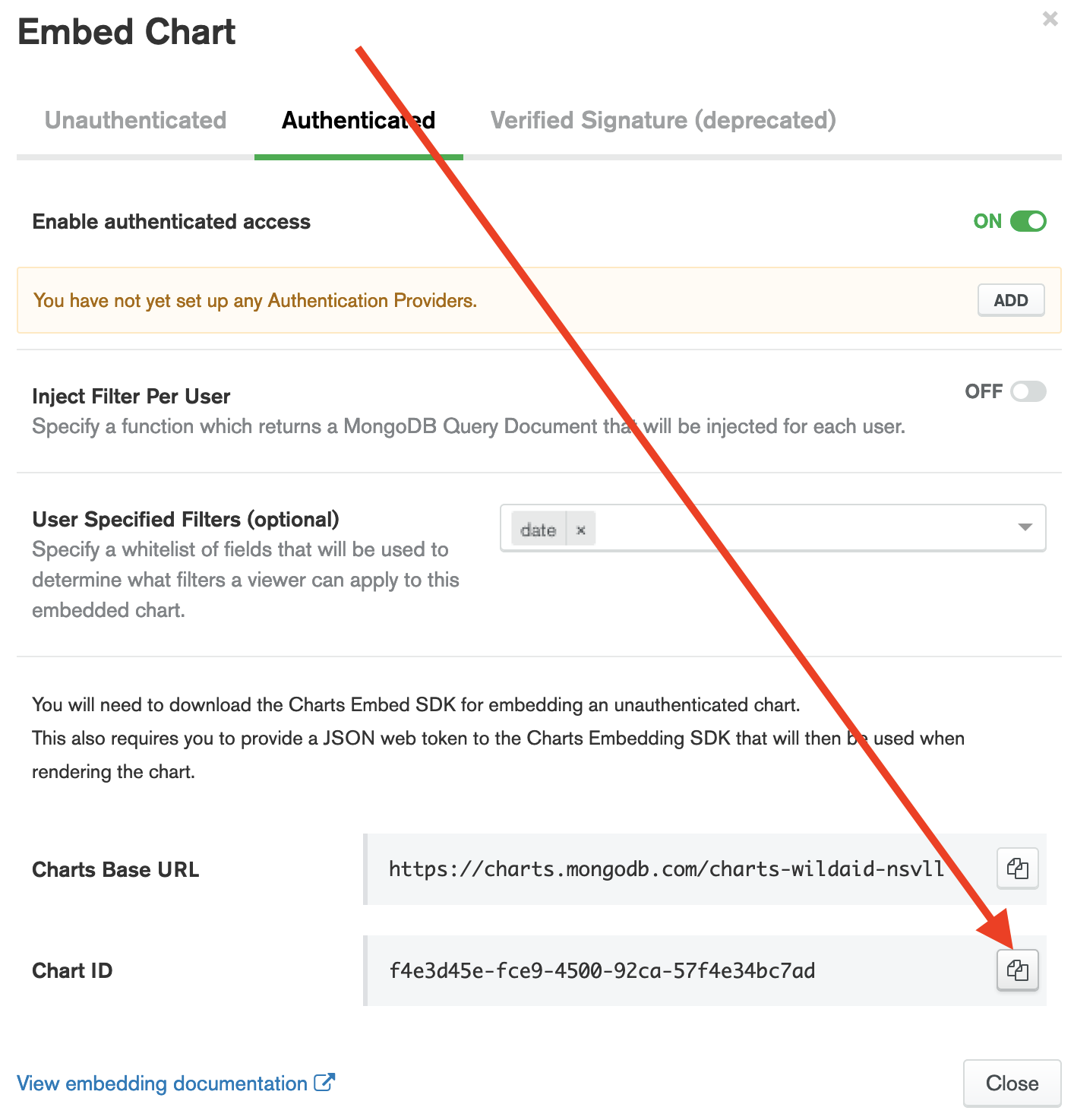
-
Select “Close” to close the “Embed Chart” window.
- Paste the Chart ID into your web application’s src/config.js file under “compliance-rate”.
Onward to the donut chart!